Menu
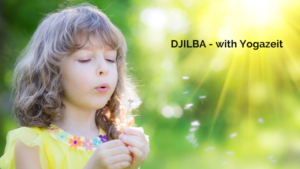
Djilba heralds the beginning of the flower explosion that occurs across Nyoongar boodja each year and in particular, a time to look for yellow and cream flowers on mass. It is a transitional time of the year with some very cold and clear days combining with warmer, rainy and windy days mixing with the occasional sunny day. The Nyoongar seasons can be long or short and are indicated by what is happening and changing around us rather than by dates on a calendar.
Maybe the changing season is an invitation for you to be mindful of change in your life. Practicing awareness of ‘what is’ – the changing colours, temperatures – perhaps even moods – will allow you to expand on your capability to be mindful and experience the moment. Hopefully this invites you to reflect on where you are in your life and allows you to be present – with an open mind.
Today we’ve included in our monthly resource (currently a little irregular because we’re a little under the pump due to Covid-19 adjustments and ever evolving flexibility) some ideas on welcoming Djilba or Spring into your Aged Care or Classroom with Yoga and Mindfulness.
Enjoy!
Why not start the school day with a short sequence to warm up your whole body? This sequence disciplines the body through repetition, helps to wake up focus and can ‘reset’ unhelpful physical and emotional tension.
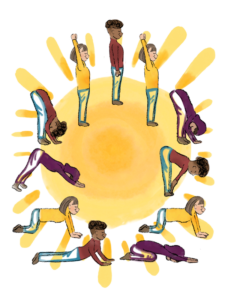
Repeat 2-3 times. Make this a fun and engaging warm up activity.
Option for Kindy or Early Childhood children: Use the Song Sun Salutations by Kira Willey © (Spotify). Remember to check your schools’ music licensing and copyright regulations.
Lyrics:
This can also be adapted to the chair for older adults at Aged Care or community living. Or why not combining a class for the Young and Young at Heart, moving through mindful stretches supported by some gentle music providing fun, laughter and connection. Give it a go!
The only thing that is certain in life is that it is uncertain. We can find comfort in this unpredictability by choosing to focus on what is actually within our control.
One way to step away from our strange reality is by being more present – we can pause to find joy in the small things, especially during a season as lovely and inspiring as spring. Appreciating less is a good virtue to pass onto children and older adults as well, who are so often bombarded through the media and their peers about needing more stuff and more things to do to be happy. In Yoga – this practice is called ‘Contentment’. Being happy and grateful with what is.
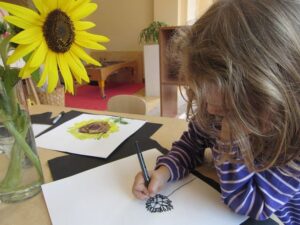 Observational drawing is a key practice of the educational philosophy, Reggio Emilia. It involves captivating a child’s senses by noticing the details of an object and depicting it, starting traditionally with a pencil and then adding colour. Your Yogis can be given a choice of materials to complete their drawing – paint, markers, etc. The key is to draw realistically and as true to life as possible, which of course takes practice like everything else. When a person is fully absorbed in this artistic work, they are fully present and mindful of the object they are focused on.
Observational drawing is a key practice of the educational philosophy, Reggio Emilia. It involves captivating a child’s senses by noticing the details of an object and depicting it, starting traditionally with a pencil and then adding colour. Your Yogis can be given a choice of materials to complete their drawing – paint, markers, etc. The key is to draw realistically and as true to life as possible, which of course takes practice like everything else. When a person is fully absorbed in this artistic work, they are fully present and mindful of the object they are focused on.
This is also a beautiful activity for older adults with Dementia.
Consider using these prompts to help your students draw what they see.
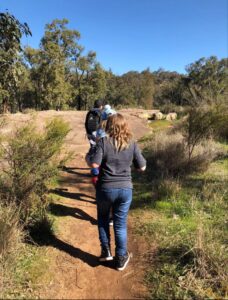 Singing birds, blooming trees, swaying grasses — you can get it all within an hour of your house. Try to think about what you connect with the Djilba season. Start making a list of things you think you will notice.
Singing birds, blooming trees, swaying grasses — you can get it all within an hour of your house. Try to think about what you connect with the Djilba season. Start making a list of things you think you will notice.
Now – take this activity outside. Bring a pen and paper or a phone to capture some photos. Spy a bird, a snail, a tree, an insect, 10 different colours, 3 different smells, 5 different sensations of touch (e.g. the paperbark, the grass, the dirt, a pebble or rock … – get creative).
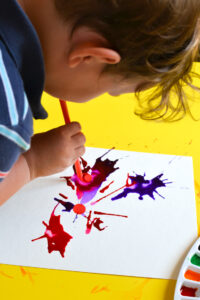
This fantastic activity helps you to expand on your lung capacity and breathing awareness. What you need: An environmentally friendly straw, paper, paint (water paint or washable paint is great as it’s a bit more runny). Older adults love this one too – encourage taking it easy and gentle!
Helpful questions to encourage exploration:
What shapes did you make? Can you make Yoga shapes with your blow-paint?
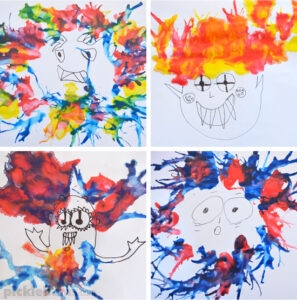
Please enjoy the Djilba Season and please share some of your activities with us on socials #yogazeit_australia and #yogazeitkids.
Your Yogazeit Team








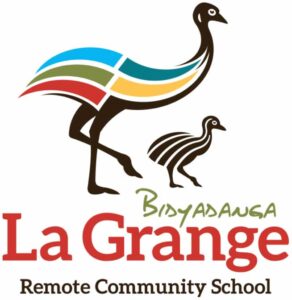
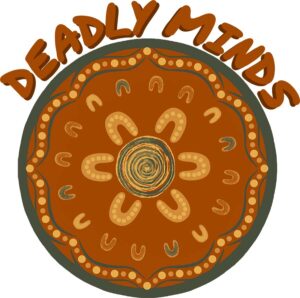
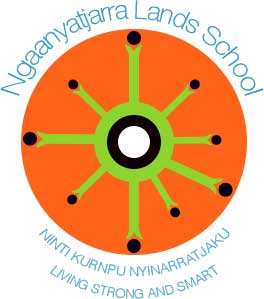
No spam – just event updates, breathing exercises and free meditation/mindfulness activities.
We won’t pass your details onto third parties. Promise!
© Yogazeit 2019–2023. All rights reserved.
View our Terms and Conditions and Policies and our Guiding Principles.
ABN: 62 631 658 305
Website designed by Eurisko with thanks and gratitude to Lotterywest Grants.
We wish to acknowledge the traditional custodians of the land we are working and living on, the Whadjuk Noongar people.
We acknowledge and respect their continuing culture and the contribution they make to the life, education and mindfulness of this city and this region supported by the leadership of Noongar elders past, present and emerging.
We extend this acknowledgement and respect to all Aboriginal and Torres Strait Islander peoples across Australia.